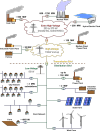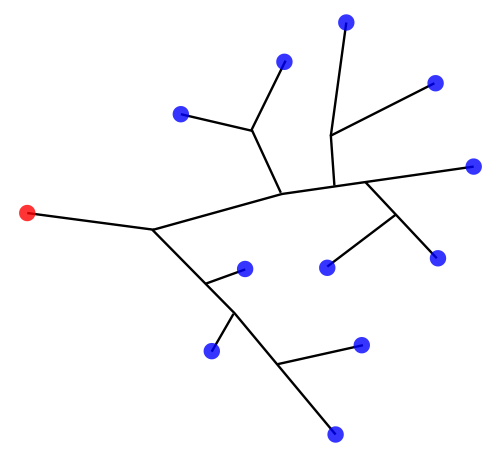TACS Wind Power
The wind may qualify as a renewable resource, but “renewable” has
its limits. Exactly how much energy we can feasibly pull from the
wind has been something of a controversial question in recent years,
with some studies suggesting that wind power is not the planet saver
it’s cracked up to be. Simulations unveiled this week by scientists
in Delaware and California, though, argue that if anything,
economics and politics will hold wind development back, rather than
geophysical limits.

Wind-power systems work by taking the kinetic energy of wind and
turning it into mechanical energy in the turbine to create
electrical energy. Laws of physics tell us that the total amount of
energy can’t change, so at least a minor slowing of the wind is
expected as it passes through the turbine.
“Adding a turbine represents a trade-off: We get energy, but the
wind is slowed down,” says Kate Marvel of Lawrence Livermore
National Laboratory, in California, who did one of the analyses
along with Ben Kravitz and Ken
Caldeira, of the Carnegie Institution for Science at Stanford
University. “At some point, adding one more turbine leads to
diminishing returns: The wind is slowed to such an extent that we
don’t get any more energy. This is what we call the geophysical
limit.”
Marvel’s research, published
Sunday in Nature
Climate Change, used a climate model to estimate that
limit, both for turbines placed near Earth’s surface—as they are
built now—and for high-altitude turbines, such as the kite-like
tethered devices currently under development. [Editor’s note: Look
for a feature article on kite-power systems in the December 2012
issue of IEEE
Spectrum.] They found that the geophysical limit for
Earth-based turbines is 428 terawatts or more but a whopping 1873 TW
for high-altitude systems. The current global power demand? About 18
TW. “While there is a geophysical limit, civilization-scale wind
power is nowhere near it,” Marvel says.
This is a comforting result, given the findings of some earlier
research. One study of wind power’s geophysical limits, published in
the journal Energy
Policy in 2011,
arrived at an
upper limit of about 1 TW. But Mark
Jacobson, a professor of civil and environmental engineering at
Stanford, says that “the calculation of 1 TW was literally done with
a back-of-the-envelope single-line equation” and didn’t take actual
physical properties of turbines or the atmosphere into account.
Jacobson and Cristina
Archer of the
University of Delaware conducted what they say is a far more
detailed analysis than earlier efforts; their report is published
this week in Proceedings
of the National Academy of Sciences. “We remove energy from
the atmosphere exactly where the turbines remove it, not near the
ground at the surface,” says Archer. The model they used takes
atmospheric dynamics, water-vapor effects, and other factors into
account. “We even incorporated a real power curve from a modern
turbine directly into the code in real time,” she says. “None of the
previous studies did anything like this. Thus we believe that our
results are far more reliable.”
Using a different climate model than Marvel’s group, they calculated
a maximum power of more than 250 TW at 100 meters above the ground,
and 380 TW at the jet-stream height of 10 kilometers. “In reality,
we will never get even close to such high penetrations of wind
power,” Archer says. “We humans do not even have enough cement to
build so many turbines.” To get to even 100 TW of installed capacity
would require somewhere around 20 million very large turbines. A
somewhat more realistic 4 million turbines, installed nonuniformly
around the world, could easily supply about half the world’s power.
Both new studies also address a separate issue that arises with
massive numbers of wind turbines: Can they actually cause climate
change? The changes in kinetic energy that result from millions of
spinning turbines do have an effect, but Marvel says significant
alterations to global temperature or weather patterns are only
likely at “truly absurd extraction rates.” Even “civilization-scale
reliance on wind power” would change mean temperatures by one-tenth
of a degree Celsius and mean precipitation rates by about 1 percent,
according to the California scientists. On a more local level,
near-surface turbines do have a minor warming effect, and
high-altitude turbines would have a small cooling effect. The former
finding caused a minor stir earlier this year after reports
of warming from a wind farm in Texas, but on a global level it
does not appear that wind power can do much to the climate.
Marvel says the primary questions when discussing truly massive
wind-power expansion are these: Will we run out of wind? And will we
destroy the climate? “As far as practical implications go, no one is
seriously suggesting that we blanket the surface of the Earth or the
whole atmosphere with uniformly distributed wind turbines,” Marvel
says. “But I’d argue that it’s reassuring to have physically
defensible ‘no’ answers to [those] questions.”
About the Author
Dave Levitan is a
science journalist who contributes regularly to IEEE
Spectrum’sEnergywise
blog. In our June 2012 issue, he reported on what’s behind
the persistent efficiency gap
between that of record-setting solar cells and
what comes off the manufacturing line.
Geophysical
limits to global wind power(pdf)


TACS
|